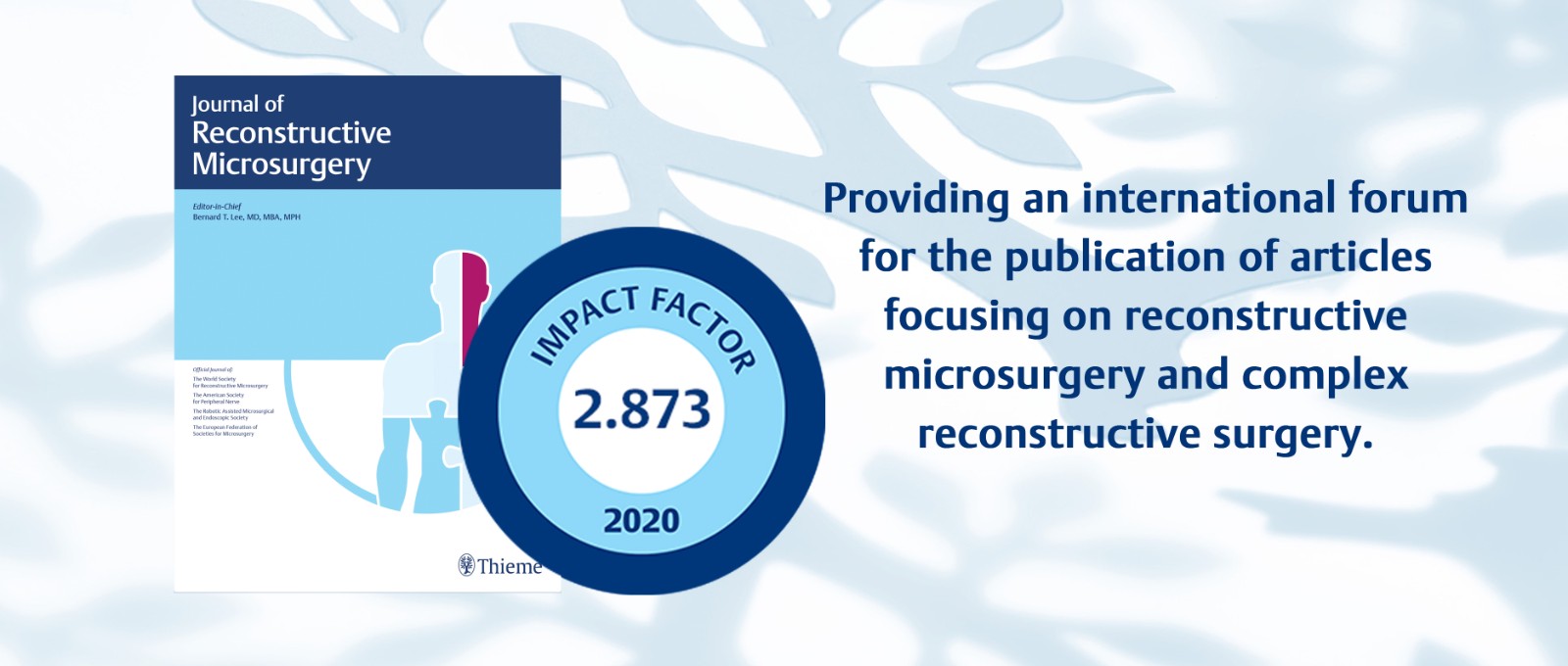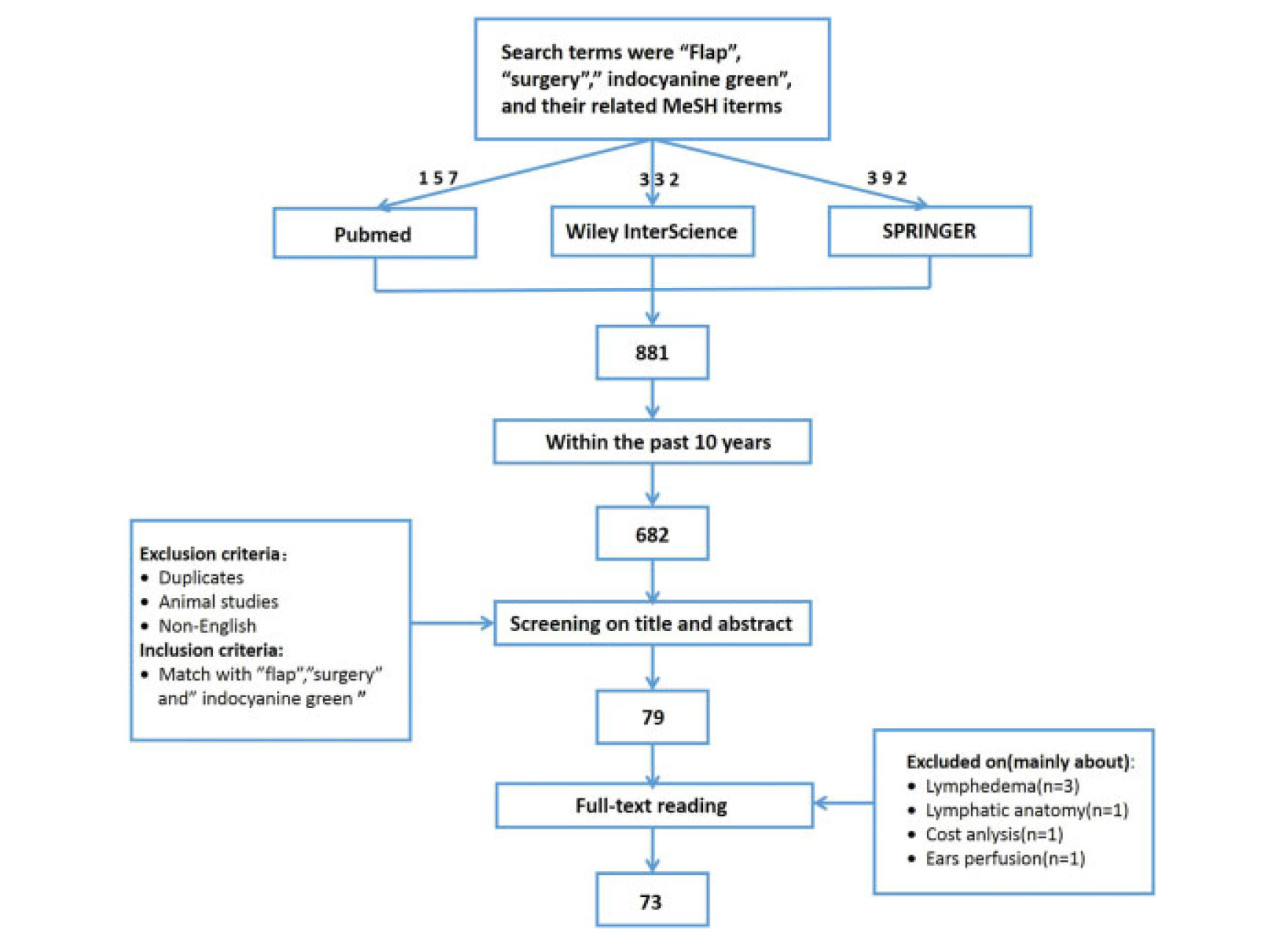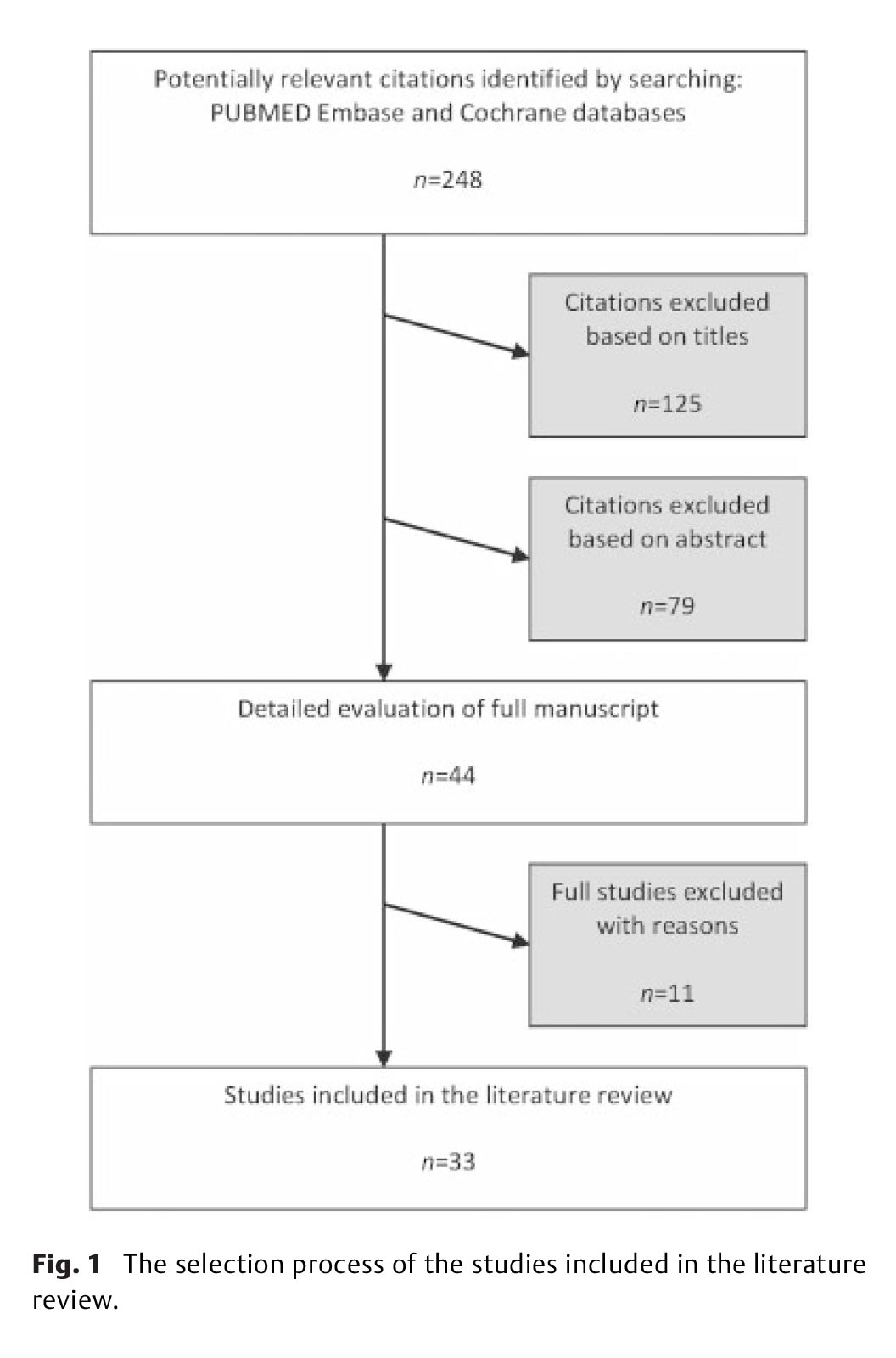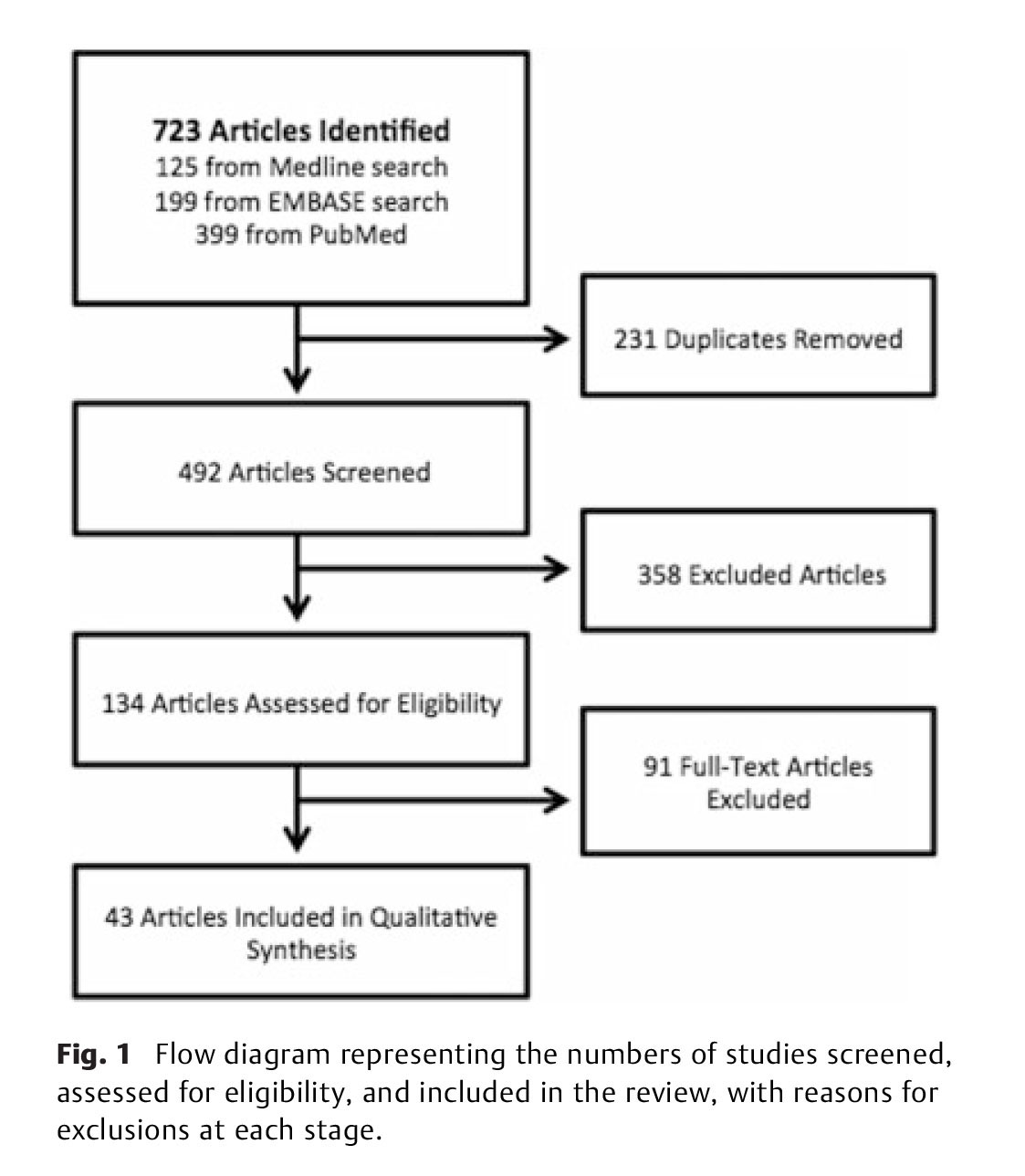

Thieme整形外科期刊Journal of Reconstructive Microsurgery 的影响因子2020提高到了2.873。非常感谢所有作者、审稿人和编辑的支持和最宝贵的贡献。
以下三篇是被引用次数最多的论文,它们对影响因子的提高有着重要贡献,欢迎免费阅读。
Application of Indocyanine Green in Flap Surgery: A Systematic Review
Ke Li, Zheng Zhang, Fabio Nicoli, Christopher D'Ambrosia, Wenjing Xi, Davide Lazzeri, Shaoqing Feng, Weijie Su, Hua Li, Pedro Ciudad, Mathias Tremp, Yi Xin Zhang

Background: The vascularization of the distal portions of transferred tissue represents the most critical factor in the success of reconstructive surgery. In recent years, indocyanine green (ICG) fluorescence imaging techniques have been applied during surgery to evaluate flap perfusion. However, this investigation has found that there is little consensus regarding the standard dose of ICG as well as the pre-operative requirements of ICG allergy testing. The aim of this study is to summarize the applications of ICG to tissue transfers and safe dosing practices and to provide insight to the possible adverse effects of ICG on flap surgery with the goal of helping clinicians apply ICG safely and efficiently to tissue transfer procedures.
Methods: A literature search was performed using, Wiley InterScience, and Springer with the key words, ‘Flap,’ ‘indocyanine green,’ ‘surgery,’ and related mesh words for all publications between 2005 and 2015. Title and abstract screening was performed using predefined in- and exclusion criteria.
Results: Seventy-three articles were included. These were classified as “application of ICG in flap surgery” and “the security of applying ICG in flap surgery”.
Conclusions: ICG fluorescence imaging preoperatively facilitates the detection of perforators in tissue flaps with thickness <20 mm, aids in the evaluation of flap microcirculation and perfusion, and allows surgeons to select dominant cutaneous nerves while evaluating the quality of vascular anastomoses and locating thromboses. The literature also concluded that potential allergic reactions to ICG should be taken into consideration.
Impact of Obesity on Outcomes in Breast Reconstruction: A Systematic Review and Meta-Analysis
Panayi et al.

Background: Increased rates of both breast cancer and obesity have resulted in more obese women seeking breast reconstruction. Studies demonstrate that these women are at increased risk for perioperative complications. A systematic review was conducted to assess the outcomes in obese women who underwent breast reconstruction following mastectomy.
Methods: Cochrane, PUBMED, and EMBASE electronic databases were screened and data were extracted from included studies. The clinical outcomes assessed were surgical complications, medical complications, length of postoperative hospital stay, reoperation rate, and patient satisfaction.
Results: Out of 33 studies met the inclusion criteria for the review and 29 provided enough data to be included in the meta-analysis (71,368 patients, 20,061 of whom were obese). Obese women (body mass index > 30 kg/m2) were 2.29 times more likely to experience surgical complications (95% confidence interval (CI) 2.19–2.39; p < 0.00001), 2.89 times more likely to have medical complications (95% CI 2.50–3.35; p < 0.00001), and had a 1.91 times higher risk of reoperation (95% CI 1.75–2.07; p < 0.00001). The most common complication, wound dehiscence, was 2.51 times more likely in obese women (95% CI 1.80–3.52; p < 0.00001). Sensitivity analysis confirmed that obese women were more likely to experience surgical complications (risk ratio 2.36, 95% CI 2.22–2.52; p < 0.00001).
Conclusions: This study provides evidence that obesity increases the risk of complications in both implant-based and autologous reconstruction. Additional prospective and observational studies are needed to determine if the weight reduction prior to reconstruction reduces the perioperative risks associated with obesity.
Haykal et al.

Background: In 1986, Marko Godina published his seminal work regarding the timing of free-flap reconstruction for traumatic extremity defects. Early reconstruction, compared with delayed and late reconstruction resulted in significant decreases in free-flap failure rate, post-operative infections, hospitalization time, bone healing time, and number of additional anesthesias. The objective of this manuscript was to evaluate whether these principles continue to apply.
Methods: A meta-analysis was performed analyzing articles from Medline, Embase, and Pubmed. Four hundred and ninety-two articles were screened, and 134 articles were assessed for eligibility. Following full-text review, 43 articles were included in this study.
Results: The exact timing for free-flap reconstruction, free-flap failure rate, infection rate, and follow-up was defined in all 43 articles. Early free-flap reconstruction was found to have significantly lower rates of free-flap failure and infection in comparison to delayed reconstruction (p = 0.008; p = 0.0004). Compared with late reconstruction, early reconstruction was found to have significantly lower infection rates only (p = 0.01) with no difference in free-flap failures rates. Early reconstruction was found to lead to fewer additional procedures (p = 0.03). No statistical significance was found for bone healing time or hospitalization time.
Conclusion: Early free-flap reconstruction performed within the first 72 hours resulted in a decreased rate of free-flap failures, infection, and additional procedures with no difference in other parameters. The largest majority of free flaps continue to be performed in a delayed time frame.
阅读本刊更多论文,请点击这里。
